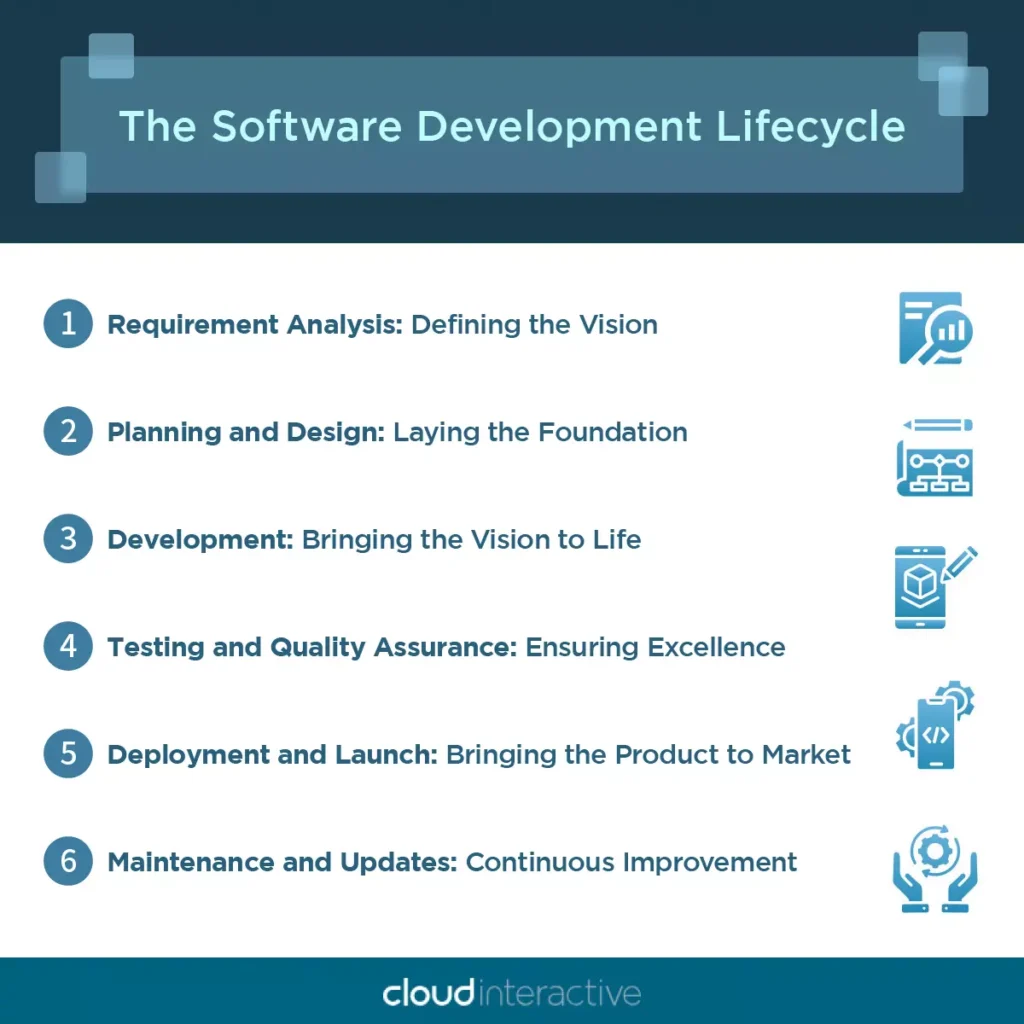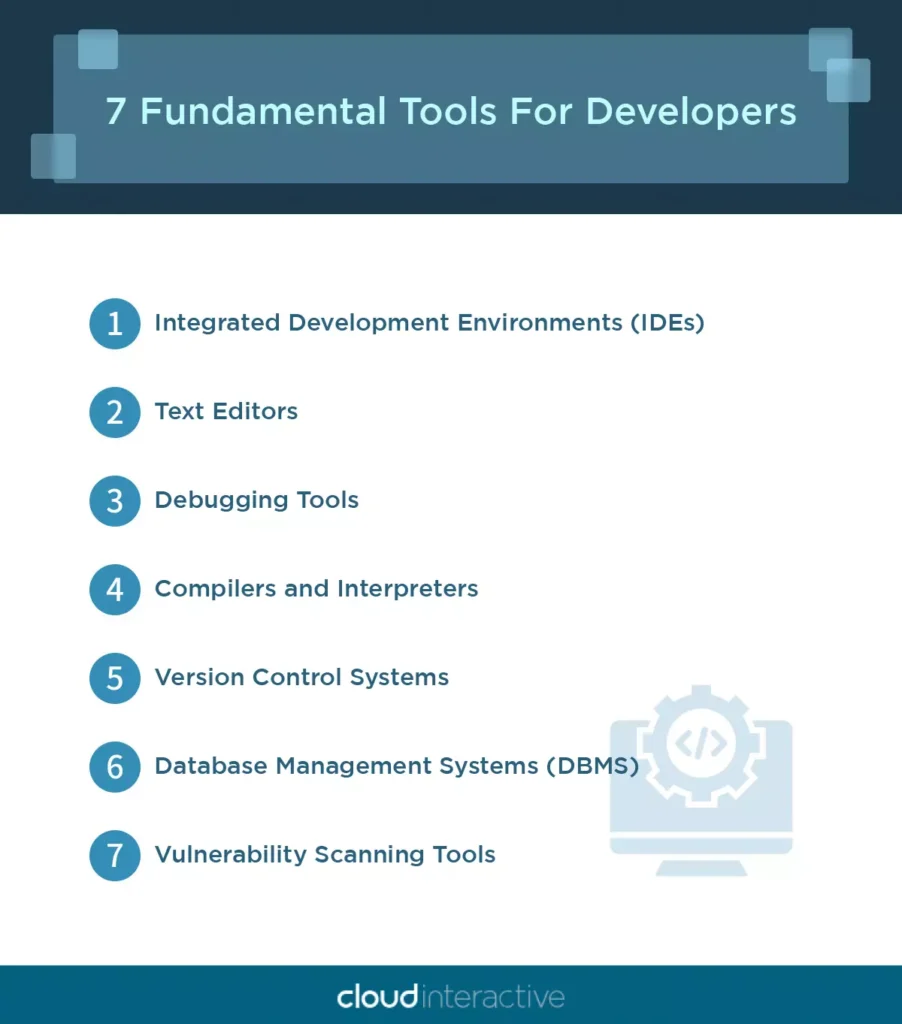
How to Develop Software: Crafting Your Competitive Edge
This blog post aims to provide business professionals with a foundational understanding of software development, regardless of their technical background. We’ll explore the different types of software, the benefits of custom development, and the various stages involved in bringing your software idea to life.
Why Do Some Businesses Choose To Develop Custom Software?
While custom software development demands substantial investment in cost, time, and human resources, it often proves to be a strategic advantage for businesses. While pre-built software solutions offer lower initial costs, they usually fall short of meeting businesses’ unique and evolving needs as they expand. Limitations such as restricted functionalities, inflexibility, and scalability hinder growth and efficiency.
Understanding Common Software Types
Before embarking on the development journey, it’s crucial to grasp the different types of software available. Some common categories include:
- Enterprise Resource Planning (ERP): A centralized system that manages core business functions like finance, HR, and supply chain.
- Customer Relationship Management (CRM): Software that helps businesses manage and analyze customer interactions and data.
- Human Resource Management (HRM): Systems designed to streamline HR processes, such as recruitment, payroll, and performance management.
- Mobile Apps: Applications built for smartphones and tablets, providing on-the-go access to services and information.
- Web Apps: Software accessed through a web browser, eliminating the need for installation.
From Idea to Impact: Navigate the Software Development Lifecycle

What is SDLC?
The software development life cycle typically involves five major steps: requirement analysis, software planning and design, software development, software testing and deployment, and maintenance and updates. Each step has its associated tasks and challenges. Understanding these steps provides a clear roadmap for businesses and individuals interested in building software solutions, helping them navigate the process more effectively.
# Step 1: Requirement Analysis: Defining the Vision
The journey begins with a deep understanding of user needs and business objectives. Through careful analysis, stakeholders identify the software’s purpose, target audience, and desired functionalities. Effective communication and collaboration are essential to gather comprehensive requirements.
# Step 2: Planning and Design: Laying the Foundation
With a clear vision, the planning phase focuses on translating requirements into a detailed blueprint. This involves creating wireframes, mockups, and flowcharts to visualize the software’s user interface (UI) and user experience (UX). Architectural decisions are made to determine the software’s underlying structure and technology stack.
# Step 3: Development: Bringing the Vision to Life
Equipped with a solid plan, developers write code to bring the software to life. Agile methodologies, such as Scrum or Kanban, are often employed to foster flexibility and iterative development. Breaking the project into smaller, manageable modules accelerates progress and facilitates collaboration.
# Step 4: Testing and Quality Assurance: Ensuring Excellence
Rigorous testing is crucial to identify and eliminate defects. Various testing techniques, including unit testing, integration testing, and user acceptance testing, ensure the software functions as intended. Quality assurance (QA) teams are vital in maintaining high standards.
# Step 5: Deployment and Launch: Bringing the Product to Market
Once testing is complete, the software is deployed to the production environment. This may involve releasing it internally, launching it to a specific market segment, or making it widely available. Careful planning and execution are essential for a successful launch.
# Step 6: Maintenance and Updates: Continuous Improvement
Software is a living product that requires ongoing care. Maintenance involves fixing bugs, addressing security vulnerabilities, and implementing performance enhancements. Regular updates introduce new features and adapt the software to evolving user needs.
Building Software: Waterfall or Agile?
The software development landscape is a dynamic mix of traditional and modern methodologies, with Waterfall and Agile standing out as influential approaches, each with distinct strengths and weaknesses.
The Waterfall Model: A Linear Path to Completion
The Waterfall Model is a sequential design process, like constructing a floor-by-floor. Each phase – from conceptualization to maintenance – is completed before the next begins. This structured approach offers clarity and control, making it a preferred choice for projects with well-defined requirements and minimal anticipated changes.
Advantages:
- Clear Project Management: The Waterfall Model’s sequential nature makes it easy to track project progress and identify potential bottlenecks.
- Structured Approach: The well-defined phases and deliverables provide a clear framework for project management, even when working with external teams or outsourcing.
Disadvantages:
- Limited Flexibility: Adding or updating features after the initial development phase can be difficult and time-consuming.
- Increased Risk: Delivering a product that doesn’t meet expectations is higher, as issues may only be identified late in development.
The Agile Methodology: Adapting to Change
Agile software development is an iterative approach that emphasizes flexibility and collaboration. Projects are divided into smaller cycles or sprints, allowing for frequent adjustments based on user feedback and evolving requirements. This dynamic methodology is well-suited for complex projects and rapidly changing markets.
Advantages:
- Increased Efficiency: Breaking down projects into smaller iterations can improve efficiency and reduce time-to-market.
- Flexibility: Agile allows for adjustments based on user or market needs, even during development.
Disadvantages:
- Scope Creep: Agile projects can be prone to scope creep without careful management, leading to increased costs and timelines.
- Communication Overhead: Effective communication and collaboration are essential in Agile but can also increase communication overhead.
Waterfall vs. Agile: Which is Right for You?
The optimal methodology depends on various factors, including project size, complexity, team structure, and organizational culture.
- Choose Waterfall when requirements are stable, risks are manageable, and a structured approach is essential.
- Opt for Agile when the project is complex, the market is dynamic, and rapid adaptation is crucial.
- Adopt a Hybrid Approach: combining elements of both Waterfall and Agile can be effective in certain software development scenarios. Developing teams can select the most appropriate methodology by carefully considering project specifics and organizational goals.
Fundamental Tools
Mastering software development involves more than just methodologies; it requires leveraging the right tools. Here’s a look at the key tools essential for every development project:

- Integrated Development Environments (IDEs): IDEs like Microsoft Visual Studio, Eclipse, and IntelliJ IDEA streamline development by combining coding, building, testing, and debugging into one platform, significantly boosting productivity.
- Text Editors: Text editors such as Sublime Text and Notepad++ offer a lighter alternative to IDEs. They are crucial for managing and organizing large codebases, enhancing readability and ease of editing.
- Debugging Tools: Tools like VSCode, Chrome DevTools, and dbForge SQL Tools are essential for pinpointing and fixing code errors. Many of these tools offer automatic correction features to streamline the debugging process.
- Compilers and Interpreters: Compilers convert entire programs into machine code in one go, which is ideal for large projects but requires post-compilation error handling. Interpreters execute code line-by-line, allowing immediate testing and adjustments, though they may be slower than compilers.
- Version Control Systems: Git is a vital tool for managing different software versions, preventing issues such as accidental deletions or overwrites, and maintaining a comprehensive history of changes.
- Database Management Systems (DBMS): DBMS tools like MySQL and PostgreSQL manage data storage, retrieval, and integrity, ensuring that data is secure and consistent.
- Vulnerability Scanning Tools: Automated tools like OpenVAS identify security vulnerabilities within software, offering recommendations to address these issues and enhance overall security before release.
Elevating Software Development with AI Technology
As AI technology advances, its role in software development is evolving, too. AI and machine learning automate testing, analyze data, and assist in coding, which reduces costs and increases efficiency. According to GitHub, AI-driven tools streamline debugging and testing, accelerate development, and minimize errors, lowering the barriers to software development.Ready to Supercharge Your Business with AI?
Cloud Interactive: Your Digital Transformation Ally
Outsourcing software development offers a streamlined approach to building custom solutions. Instead of navigating the complexities of how software development works—from team recruitment to project management—businesses can focus on core competencies. By partnering with experienced developers, organizations gain access to specialized skills, accelerated timelines, and cost efficiencies.
Why Choose Cloud Interactive for Software Development?
Cloud Interactive offers a comprehensive suite of software development services backed by over 14 years of industry experience. Our team of experts delivers tailored solutions that align with your unique business objectives.
Our Advantages:
- Proven Expertise: Our track record with global clients, including Cisco, Renesas Electronics, and M&C Saatchi, demonstrates our ability to handle complex projects across diverse industries.
- User-Centric Approach: We prioritize user experience, creating intuitive and efficient software solutions.
- Industry Insights: Our deep understanding of market trends and business challenges enables us to develop innovative solutions.
- Reliable Project Management: Our dedicated team ensures projects are delivered on time and within budget.
- Flexible Development Approach: Whether you prefer Agile or Waterfall methodologies, we adapt to your specific needs.
You gain a reliable partner committed to your success by choosing Cloud Interactive.
By Cloud Interactive
Meet the masterminds behind the curtain at Cloud Interactive. We're not just software developers - we're also a content crew fuelled by caffeine and a thirst for knowledge. We translate tech jargon into plain English, dissect industry trends, and craft helpful tips that are informative and engaging. So, buckle up and join us on a journey through the ever-evolving and exciting world of technology!


